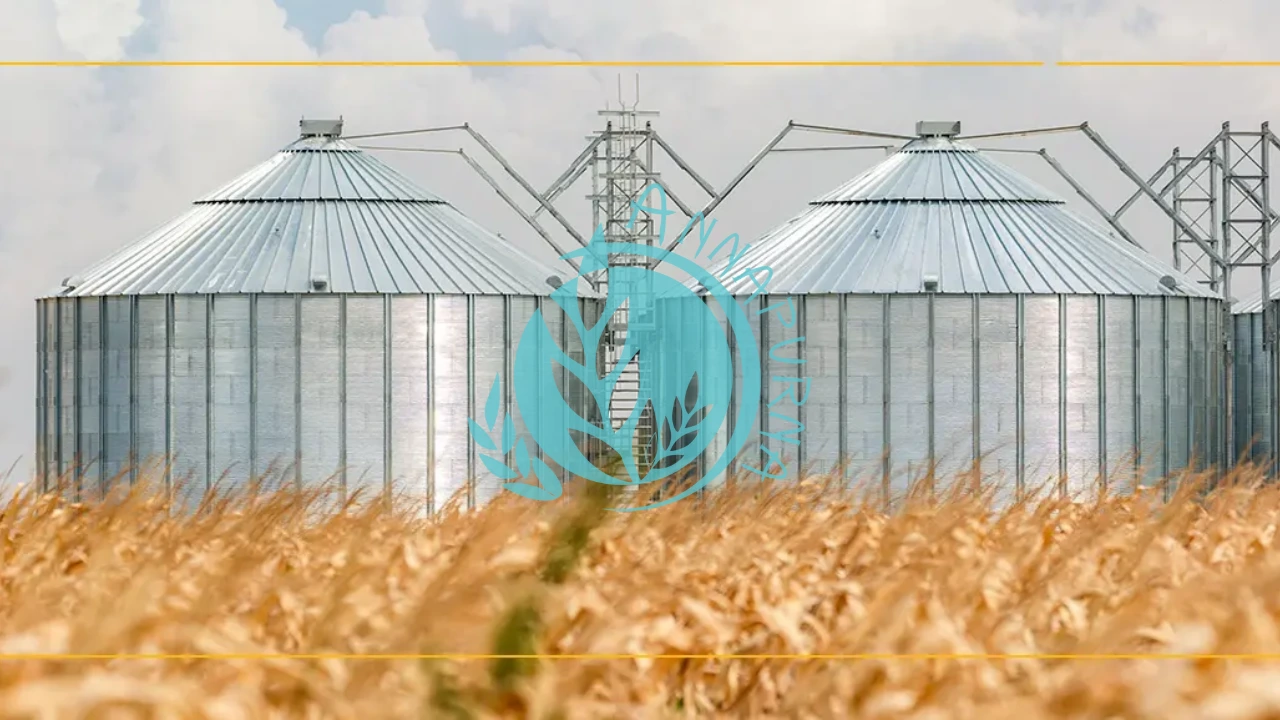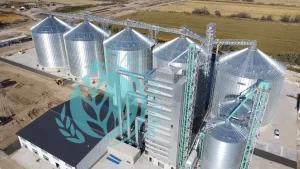Grain farming is a multifaceted process that demands precision, knowledge, and dedication at every stage. From preparing the field to planting the seeds, nurturing the crop, harvesting, and storing, each step is vital for ensuring a successful and profitable harvest. India experiences a multitude of cropping patterns and harvesting times throughout the year. For farmers, each season brings its own set of challenges and opportunities. Being prepared and equipped to tackle these challenges is crucial for a successful harvest. Moreover, careful planning for the next season is essential for sustaining long-term productivity.
Also Read Us: What is Silo ? and What is Grain Silo ?
Step 1: Preparing the Field for Planting
The journey to a successful grain Farming starts with proper field preparation. Before planting, farmers need to assess soil conditions, determine the right crop to grow, and prepare the land by removing weeds and ensuring the soil is in optimal condition. Ensure that access roads and entry points to the fields are clear and easily navigable. Additionally, mark boundaries and designated areas for storing harvested crops to streamline post-harvest handling and transportation.
Step 2: Planting the Seeds
Planting seeds requires precision to ensure they are placed at the correct depth and spacing for optimal growth. Whether using traditional methods or modern equipment, farmers need to ensure that each seed is well-positioned to thrive.
Seek to acquire your seeds from a reputable supplier who has tested the seeds for diseases, weeds and germination. Different grains have some slightly different preparation processes, but here are some of the basic next steps you should take once you have your seeds:
- Choose the right spot for planting: Sunny areas with good soil are best. You should also make sure the previous crop planted in that area won’t negatively impact your current crop.
- Test and till the soil: If you’re not sure about the quality of your soil, you can have it professionally tested. If it’s good to go, you can till the soil, adding a layer of compost if you choose.
Step 3: Crop Management and Growth
Once the seeds are in the ground, the next task is managing the crop throughout its growth phase. This includes ensuring the right amount of water, managing pest control, and maintaining overall crop health. Regular monitoring and timely interventions are key to preventing issues that could compromise the harvest.
Step 4: Harvesting the Grain
Once your grain has dried to a minimum of 20% moisture, you’re ready to harvest. Harvesting is one of the most critical stages in the grain farming process. If done too early or too late, the crop quality and yield can be significantly affected. Efficient harvesting requires specialized machinery that can handle the grain delicately while ensuring maximum efficiency.
Here are the steps you’ll take to harvest your grain:
- Harvest the grain from the field: Use a sickle, scythe or pruners to harvest your grain.
- Thresh the grain: This is the act of removing the grain from its casing, or chaff, by rubbing it by hand or using a machine called a thresher.
- Winnow the grain: This is the act of separating the edible grain from the inedible chaff.
Step 5: Storing the Grain
The next step in the grain farming process is to store it. You should store your grain properly, or you could risk ruining your yield due to insects or mold. Improper storage can lead to spoilage, pests, and significant financial losses. Grain storage must be managed carefully to control temperature, humidity, and airflow to preserve the grain. Only then can you store your grain. Make sure you check the grain often to keep an eye out for any moisture buildup, mold or insects, as these can ruin your harvest. Maintaining proper airflow and cool storage temperatures can help ensure successful storage.
Annapurna Agronics Machinery Pvt. Ltd. offers a range of Grain storage solutions, including silos, hopper bottom silos, flat bottom silos, bins, and drying equipment. These products are designed to keep grain in optimal condition and prevent damage during storage. The company’s storage systems ensure that the grain remains safe from environmental factors and pests, providing farmers with peace of mind and allowing them to store their harvest efficiently.
Step 6: Planning for Next Year’s Season
The final step in the grain farming cycle is preparing for the next season. After the current year’s crops have been harvested, farmers begin to review their results and make improvements to their farming strategies. This includes analyzing crop performance, evaluating machinery efficiency, and adjusting their methods to improve productivity for the following year. Every successful harvest begins and ends with planning and goal setting. Once your grain is in storage, there is plenty to plan for regarding the upcoming season. Alternating root systems and picking crops that won’t hinder next year’s crops are both important practices for ensuring a healthy yield. You’ll want to vary where you plant your crops so the soil can keep its nutrients and maintain a proper underground structure.
Conclusion
The grain farming process is complex, requiring a combination of skill, knowledge, and the right tools to ensure success. From preparing the soil to harvesting, storing, and planning for the next season, every step is integral to maximizing yields and profitability. Annapurna Agronics Machinery Pvt. Ltd. plays a pivotal role in supporting farmers at every stage of the process by providing high-quality, innovative Grain storage silos, hopper bottom silos, flat bottom silo, Zincalume Water Storage Tank, that enhances productivity and simplifies operations. Our high-quality storage bins installed by our expert team — many of whom are farmers themselves — can help keep your grain safe and fresh until it’s time to be sold on the market. We stand behind our work and offer continuing services for every project we’re involved with.


